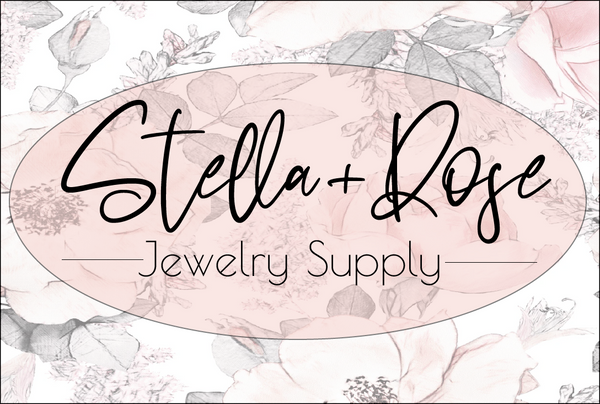Is it really Gold Filled? We wanted to address something that we’ve been getting a lot of questions about, which is the difference between gold filled and gold plated. If you’re a jewelry maker or just looking for information, understanding the difference between gold filled and gold plated is pretty essential. At first glance both of the finishes look very similar, but structurally and chemically they're very different. Unfortunately some suppliers blur the lines and they label gold plated items as gold filled, but those are the legal term.
We’ll break down the differences and expose the common things that are missed, and explain how to make confident informed decisions for your permanent jewelry components.
What Is Gold Filled Jewelry?
Gold Filled Jewelry is made by bonding a thick layer of 14 karat gold to a core based metal using heat and pressure. Now to meet U.S. legal standards, the gold must account for at least 5% of the item’s total weight.
Gold filled components are not cast from molds. Instead, they’re fabricated from gold bonded sheets, wire or tubing, then stamped, rolled or formed into shape. This construction method makes gold filled ideal for permanent jewelry.
What Is Gold Plated Jewelry?
Gold plated jewelry has a thin layer of gold (often less than 0.05%) electroplated over a base metal. The gold coating is minimal and not pressure bonded, which means it will wear off over time especially with water exposure or daily wear.
While gold plated pieces can be budget friendly, they’re not designed for longevity and are not suitable for bonding or welding in permanent jewelry.
Red Flags to Watch Out For
Here’s how to spot questionable listings when comparing gold-filled vs gold-plated jewelry:
“18K” or “24K” Gold-Filled
In the U.S., gold-filled materials are almost exclusively 14K. If you see “18K gold filled” or “24K gold filled,” it likely doesn’t meet U.S. regulations and may be plated or mislabeled entirely.
Cast or Molded Appearance
Authentic gold filled materials are never cast. If a charm or finding looks like it was poured into a mold, it’s almost certainly not gold-filled. Gold filled material is cut or shaped from bonded sheet or tubing, no casting involved.
Suspiciously Low Prices
Gold-filled carries a higher cost due to the gold content. If something seems priced like fashion jewelry but claims to be gold-filled, it's worth verifying reputable suppliers will always be transparent about material origin.
Vague Descriptions
If a product is listed simply as “gold tone,” “gold overlay,” or lacks specifics, it’s most likely gold-plated or even base metal with no real gold content.
How to Verify Genuine Gold-Filled Jewelry
- Look for proper stamps such as “1/20 14K GF” on finished items.
- Ask about manufacturing methods. Real gold-filled is mechanically bonded, not electroplate
- Shop with suppliers who support professional use and permanent jewelry work.
Why Choose Stella + Rose for Gold Filled Materials
At Stella + Rose, we take quality and accuracy seriously. Our 14K gold filled inventory is sourced from verified manufacturers in the U.S and Italy that are fully compliant with legal and professional standards in the U.S.
- Clearly labeled and described materials
- Never cast always bonded, formed, and cut
- Fully compatible with permanent jewelry techniques
- Trusted by professional jewelers nationwide
👉 Explore our Gold Filled Collection
Conclusion
Understanding the differences between gold filled vs gold plated is more than a technical detail, it's about ensuring lasting value and avoiding misleading products. Whether you're making permanent bracelets or sourcing jewelry for daily wear, your materials matter.
